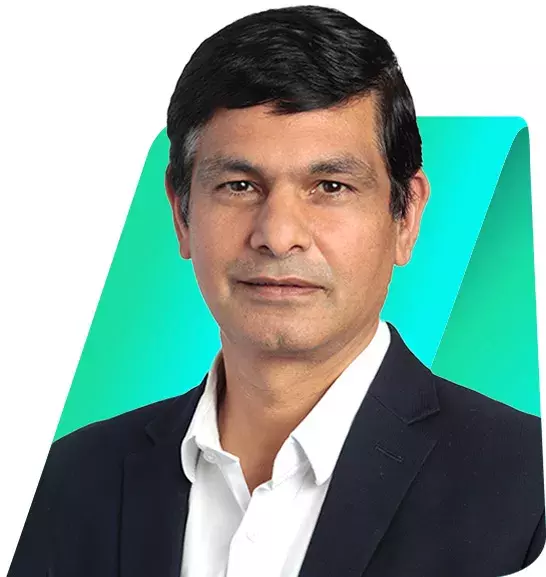The Future of GRC and Top 5 GRC Trends
- GRC
- 04 September 24

Introduction
What does the future of GRC hold? In recent discussions with customers, I've noticed a recurring pattern: 5 key themes are shaping the future of Governance, Risk, and Compliance (GRC). These conversations offer valuable insights into the evolving landscape of GRC, highlighting the trends that will define the industry's direction in the coming years. I wanted to share these with you and see what you are hearing.
Trend 1: Going from Reactive to Proactive Risk and Resilience
Today’s dynamic, interconnected web of risks means reactive risk management is no longer effective. Geopolitical risks, cyber attacks, operational risks, etc., can’t be addressed manually or in siloes. There is no certainty, and we must all be agile.
Consider some major data breaches this past week, like AT&T and RiteAid. Addressing these requires agility, resilience, and proactive action.
For companies to be successful today, organizations need to adopt a connected GRC strategy: continuous and always on; cognitive and fueled by AI; and cloud-based, meaning easy to use, adopt, adapt, and flexible. Forward-looking organizations approach risk as a competitive advantage – proactive, integrated, agile, and resilient.
Trend 2: The Changing Role of the CISO
All our roles are changing, but none faster than the CISO’s. Cyber risk is now a top business risk and the CISO is accountable to the board for owning and communicating this risk. Unlike in the past, where the CISO's focus was primarily technical, today's CISOs are expected to navigate the complexities of cybersecurity with a business-first mindset. They are now directly accountable to the board for managing and communicating cyber risks, which are increasingly recognized as critical threats to the organization's overall success.
That means measuring and articulating cyber risk in actionable, financial terms as well as collaborating across the business to tackle cyber risks. Furthermore, the CISO must work collaboratively across the organization, breaking down silos to ensure that cyber risks are addressed holistically. This requires forging strong partnerships with other business units, aligning cybersecurity initiatives with broader business objectives, and ensuring that risk management efforts are fully integrated across the enterprise.
The CISO role is now both a business and a technical leader and has a strategic seat at the C-level table. Continuous upskilling is necessary – along with an integrated approach to risk and compliance.
Trend 3: Rapidly Evolving Regulations
Staying current and compliant has been a challenge for years, but today, it’s more critical and challenging than ever. The pace of technological innovation, the increasing complexity of regulatory requirements, and the growing sophistication of cyber threats have all contributed to making compliance a moving target.
According to Thomson Reuters, there are 257 regulatory changes a day – and that doesn’t even factor in the work of complying with new regulations like DORA, the EU AI ACT, the U.S. SEC Cybersecurity Rules and all the other headline regulations.
Many of our customers are focused on AI and automation for continuous compliance, recognizing the need for ongoing monitoring. Manual testing and compliance are no longer viable in the face of so much change.
Trend 4: The Joy and Pain of AI
There is so much to say on this topic. Since ChatGPT exploded onto the scene in late 2022, there’s hardly been any other topic of conversation in GRC (or anywhere!) And though AI isn’t new, Generative AI is obviously a huge leap forward.
But AI isn’t about hype or cool things. It’s about the impact on the business: topline, bottom line, human capital, and the ethics of AI. Here are a few key aspects I’ve been discussing with our customers, analysts and key AI experts:
- Data literacy and explainability: This aspect of AI is supremely important because it empowers individuals to understand and analyze data with more accuracy.
- Augmenting, not replacing: AI is not about replacing people. It’s about augmenting people and processes. With its power to analyze huge data sets – like questionnaires, policy documents, or contracts -- AI helps uncover hidden points. You don’t have to spend time on tedious manual work. You add the insight. Humans + AI is the power equation.
- Connected GRC between 1st, 2nd and 3rd lines of defense: Processes are being re-engineered and AI for GRC will cut across siloes and be tested and validated repeatedly across the enterprise data.
- GRC for AI: AI itself creates risks and calls for governance. What are your policies? How will you govern AI’s use, the data you allow, the transparency of models for regulators? All these critical questions must be thought through.
AI is probably the most innovative shift since the internet. We must manage its risks carefully, but in this case, the joy is worth the pain.
Trend 5: Upskilling for Success
Like the changing role of the CISO, all our roles are evolving – and as GRC leaders, we must continue to learn, develop, and up-level our skill sets. As GRC becomes more integrated, it’s up to us to cross-train and expand our capabilities.
For example: How will AI affect you? Can you educate yourself on that proactively? As risk and compliance come together more and more, how can you immerse yourself in other areas? Are you thinking like a business person, not only a technical or risk leader?
GRC leaders are increasingly getting a seat at the strategy table to impact revenue and topline and drive risk as a competitive advantage.
Keeping GRC Simple
Finally, I would like to end with one last trend—let’s keep GRC simple.
At its core, GRC is about creating a unified approach to managing risk, ensuring compliance, and achieving governance objectives. By keeping GRC simple, organizations can ensure that their risk and compliance programs are not only robust but also adaptable and user-friendly. A simplified GRC approach allows for easier collaboration and clearer communication, resulting in more effective decision-making, and quicker responses to emerging risks.
The goal of integrated GRC and collaboration—in fact, all of the above—is to bring us all together in a unified approach that keeps us ahead, protected, and competitive.
This blog was initially featured as an article on LinkedIn. Read the original version.








